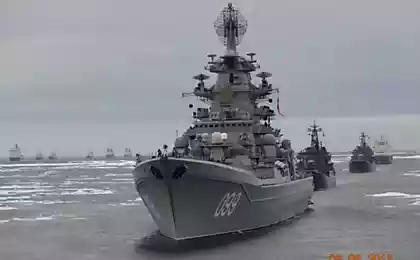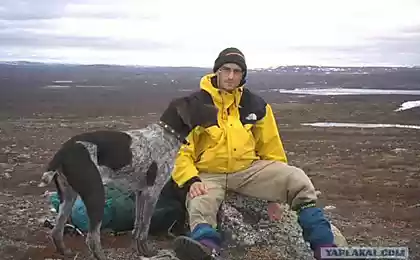1972
3.5 million years ago, the Arctic giant camels roamed

Everyone knows that the camels live in the desert, but now researchers have evidence that these shaggy animals once inhabited the vast expanses of the Canadian Arctic.
On Ellesmere Island in northern Canada, Nunavut were found fossils of a camel, the duration of which there are 3.5 million years old. This camel was about 30 percent larger than its modern counterparts. In the examination used a technique called fingerprinting. Opening described in detail in the journal Nature Communications for March 5. It suggests that modern camels evolved from giant neighbors, who once inhabited the wooded Arctic. In those days, there was a little warmer than it is today.
"This is the first evidence that once existed camels," - said the study's lead author and paleobiologist the Canadian Museum of Nature in Ottawa Natalia Rybczynski (Natalia Rybczynski). "It's amazing, because we usually associate camels with arid and semi-arid habitats».
Camels, which belong to the genus Camelus, originated in North America during the Eocene about 45 million years ago and then migrated to Eurasia via the Bering land bridge between Alaska and Russia. Their closest relatives - a llama, alpaca, vicuna and guanaco.
The researchers found 30 bone fragments that were part of the femur or tibia camel. Location excavation extended the range of well-known habitat of the northern camels to the American north about 745 miles (1200 kilometers).
Identification of the remains and their ages were determined using the technique of DNA fingerprinting, which determines the amount of type I collagen in bones. Various mammals contain a characteristic of their species number of the protein, which is stored in the body much longer than many other biological substances.
The discovered bones date to about 3.5 million years ago, a period known as the mid-Pliocene warm period. Global temperatures in those days was higher than today by about 2 to 3 degrees Celsius. Rybczynski said that in the place where he found a camel, the average annual temperature was about 30 degrees Fahrenheit (minus 1.4 degrees Celsius). Canadian Arctic expanses of forest were then.
Found the remains remind modern camel, only about one-third larger. It also has similarities with giant camels Yukon, who lived about 1,240 miles (2,000 km) from the place where they were found ancient animal bones.
The researchers plan to continue the search for the remains of a camel in the Arctic. "We hope to find more," - said Rybczynski.
As the intestines and lungs protect themselves from bacterial invasion
Work at home is killing creativity?























